“Get down!” the local Bedouin man shouted. “Not allowed!”
An awkward-looking twenty-something with blonde dreadlocks and a peach-fuzz beard peeked his head over the edge of the cliff and then quickly withdrew himself.
“No no! You come down! Police are here!”
I looked next to me—the skinny policeman was sprawled out across the entire couch, eyes locked shut, with a thick stream of saliva running down his hanging chin. He wasn’t waking up any time soon.
Two more Bedouin men, with chiseled features, wavy, dark hair, and Jack Sparrow eye-shadow rushed the scene. They ran to the bottom of the Monastery and waited for the awkward twenty-something as he came scampering down on two very nervous legs.
“Whaaaaat?” I heard him stutter, in that drawn out German accent we travelers know so well. “What’s the problem?”
“Illegal!” the two pirates called out. “Give me entrance ticket. And passport!”
With a Turkish coffee in hand, I turned to check the couch again. The policeman had been shaken awake by one of the locals and, in his groggy state of delirium, was struggling to figure out what the hell was going on.
An older authority figure with slicked-back hair and a powerful mustache stepped in and grabbed the German by the arm. I heard his poor excuses, acting like he didn’t know it wasn’t allowed, but the signs that said ‘NO CLIMBING’ were just too big to be ignored.
The locals handed over his entry ticket and passport to the mustachioed man, and I watched with delight as the German tourist was escorted away.
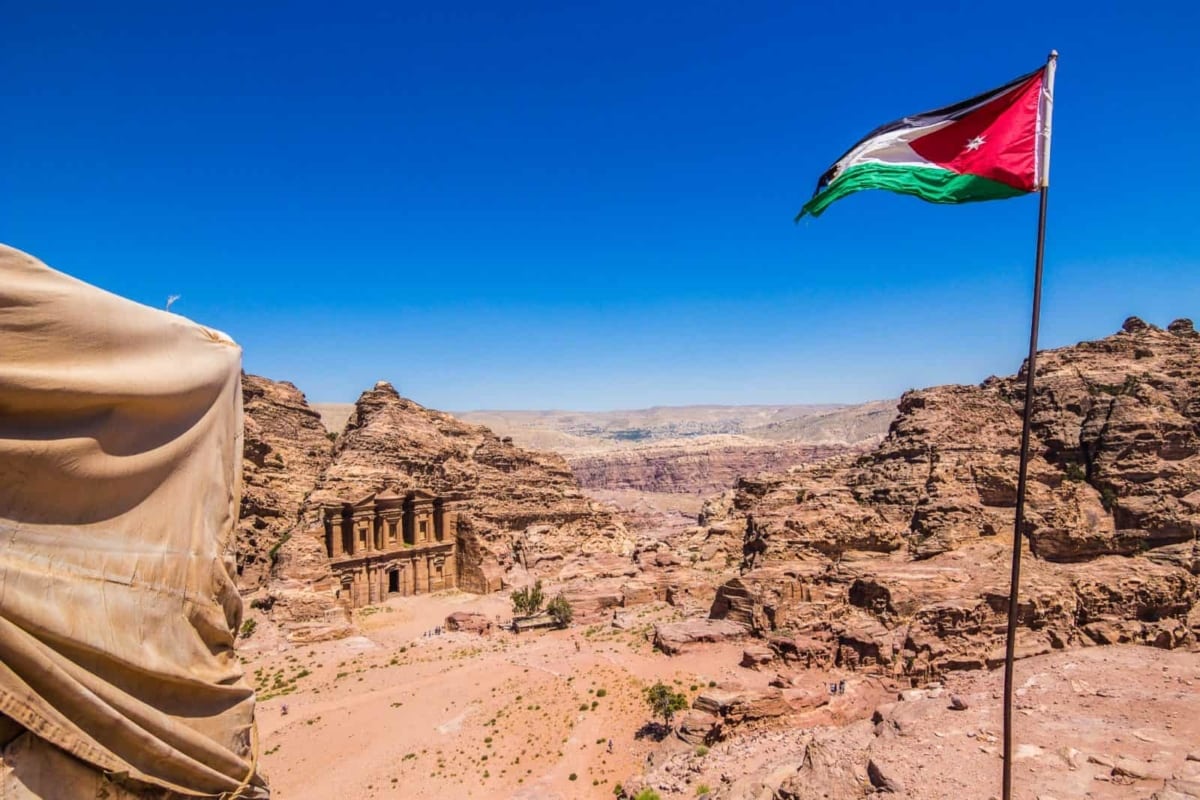
Visiting the Ancient City of Petra, Jordan
Named as one of the New Seven Wonders of the World, the “rose red city” is believed to have been built 2,300 years ago as the capital city of the Nabataeans (ancient Arabians). This city of stone lies among the Jordanian mountains in a large valley which runs from the Dead Sea to the Gulf of Aqaba. It is a half-built, half-carved red-rock city surrounded by towering sandstone passageways and gorges which seem to envelop anyone walking through them.
According to UNESCO, the ancient city of Petra “became, during Hellenistic and Roman times, a major caravan centre for the incense of Arabia, the silks of China and the spices of India, a crossroads between Arabia, Egypt and Syria-Phoenicia.”
Through annexation to the Romans and a large earthquake in 363 AD, trade routes began to change, and by the 7th century AD, the only people who remained in the city of Petra were the local Bedouin tribe. Petra was not even known to the Western World until the early 1800’s when a European traveler disguised himself as an Arab and snuck into the legendary city, revealing its existence to the rest of the world.
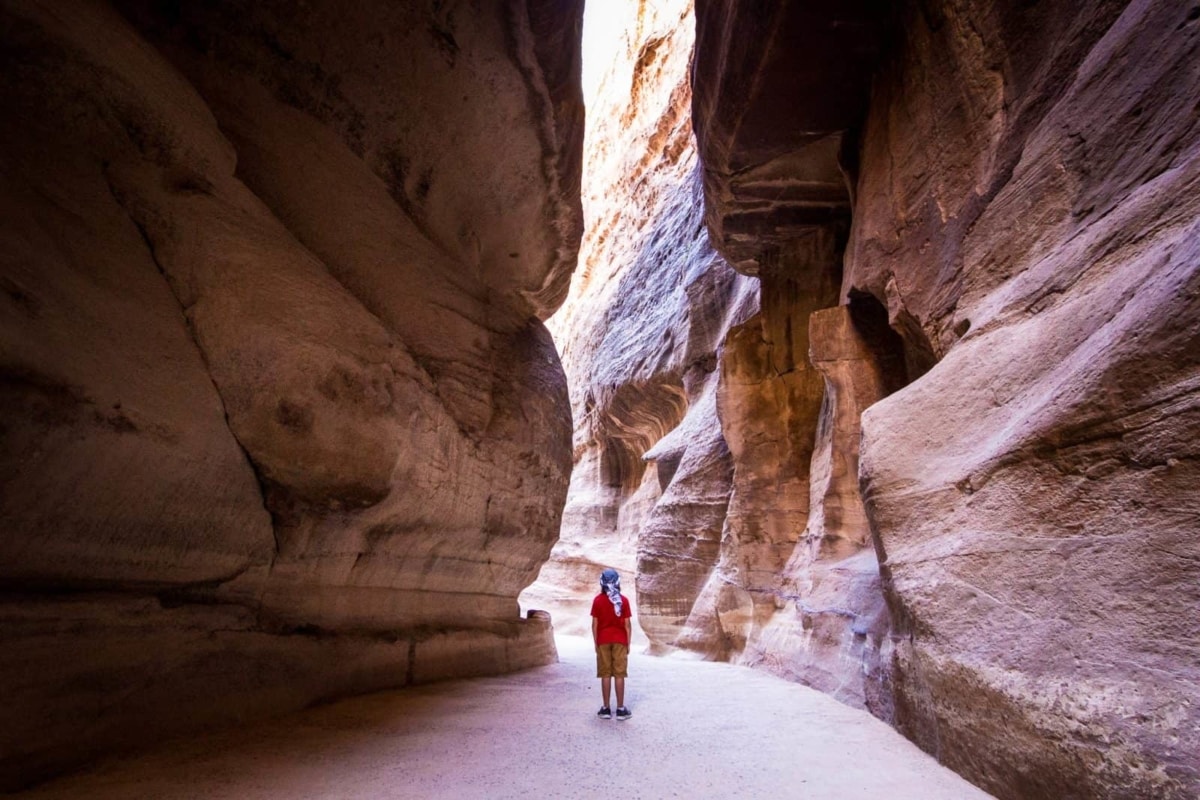
The Monuments of Petra, Jordan
There are 23 historically significant sites and monuments inside the ancient city of Petra. Today, the two main monuments are the Treasury (128ft) and the Monastery (158ft), the most impressive and well-preserved carvings in the park. Their styles are Hellenistic in nature, having been influenced greatly by Greek architecture.
Upon entering the city of Petra, the first and most recognizable monument is the Treasury, the purpose of which, to this day, remains somewhat of a mystery. The Treasury is crowned with an urn which was once believed to conceal a pharaoh’s hidden treasures. The Bedouins attempted to dislodge them by shooting down the urn, finding nothing, but leaving bullet-holes in the face of the rock which can still be seen today.
The second most recognizable monument in Petra (and the largest) is the Monastery which was used for religious symposiums. Though the Treasury cannot be climbed, the Monastery once could be. Today, due to preservation efforts, climbing to the top is prohibited…
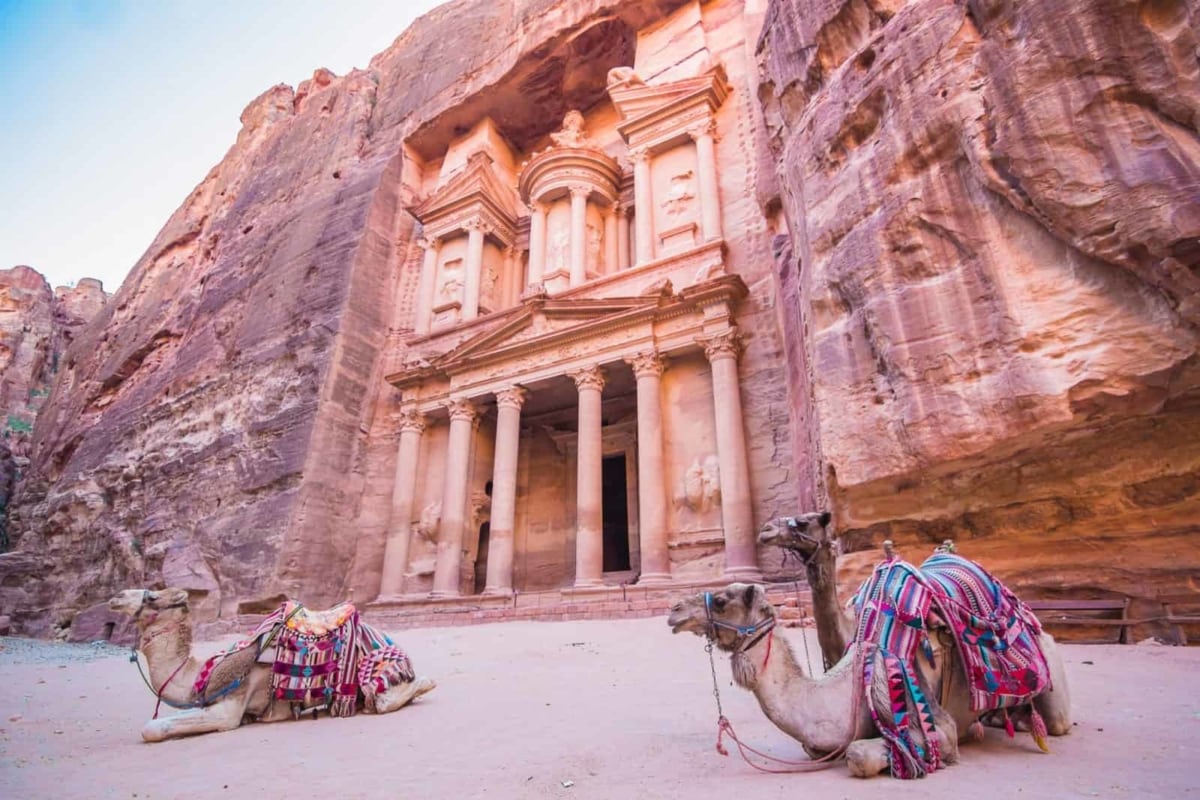
Who are the Bedouins?
In Arabic, the word Bedouin literally translates to desert dweller. This community of nomads has been drifting across the Arabian and Syrian sands for centuries, living among the harsh landscape of the desert since long before the Hashemite Kingdom of Jordan ever existed.
The Bedouin tribe of Petra known as Al B’doul claim to be descendants of the Nabataeans who occupied the area at the culmination of the Roman Empire. They lived in the caves here for more than 170 years until 1985 when Petra National Park was declared a UNESCO World Heritage site.
For preservation purposes, and with the help of UNESCO, Jordan forcibly resettled the B’doul from Petra to a nearby village. Petra is no longer an active city and is now a tourism destination largely run and operated by the Bedouins. The government provides the local population with assistance, education, and healthcare, but many still prefer the traditional nomadic way of life.
In an effort to reclaim their cultural identity, some B’doul have returned to the city of Petra against government ordinances.
As the Bedouins are travelers themselves, they are notorious for their hospitality towards other travelers they come across. The legendary laws of the Bedouin people dictate that, should a traveler stay with them for three days, no personal details are required, and the Bedouins will not ask for even their name. On the fourth day, however, there is a fee, and that fee comes in the form of information.
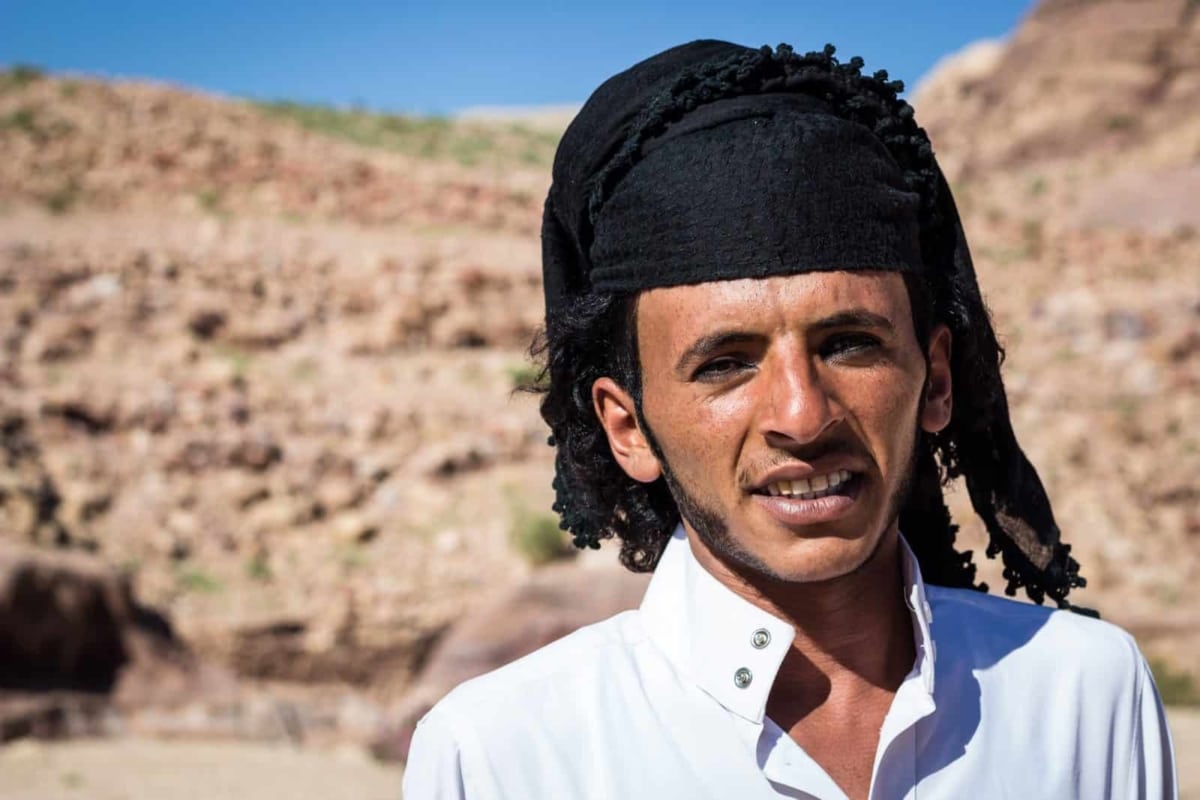
Climbing to the Top of the Monastery
The coffee was delicious and the view was even more spectacular. I was tucked into a shady corner of an outdoor cafe at the base of the Monastery in Petra, Jordan. I had been sitting in my comfy red couch for long enough when a wiry Bedouin man of about 30 lifted his wrinkled chin to me, squinted his dark eyes, and shouted, “Where you from?”
“USA!” I responded. “You?” I thought I was being funny.
“My mother!” he called back. He was being even funnier.
I liked these guys immediately—they knew how to take a joke, and they knew how to give it just as good.
“You wanna go up top?” Mohammad asked. I grinned.
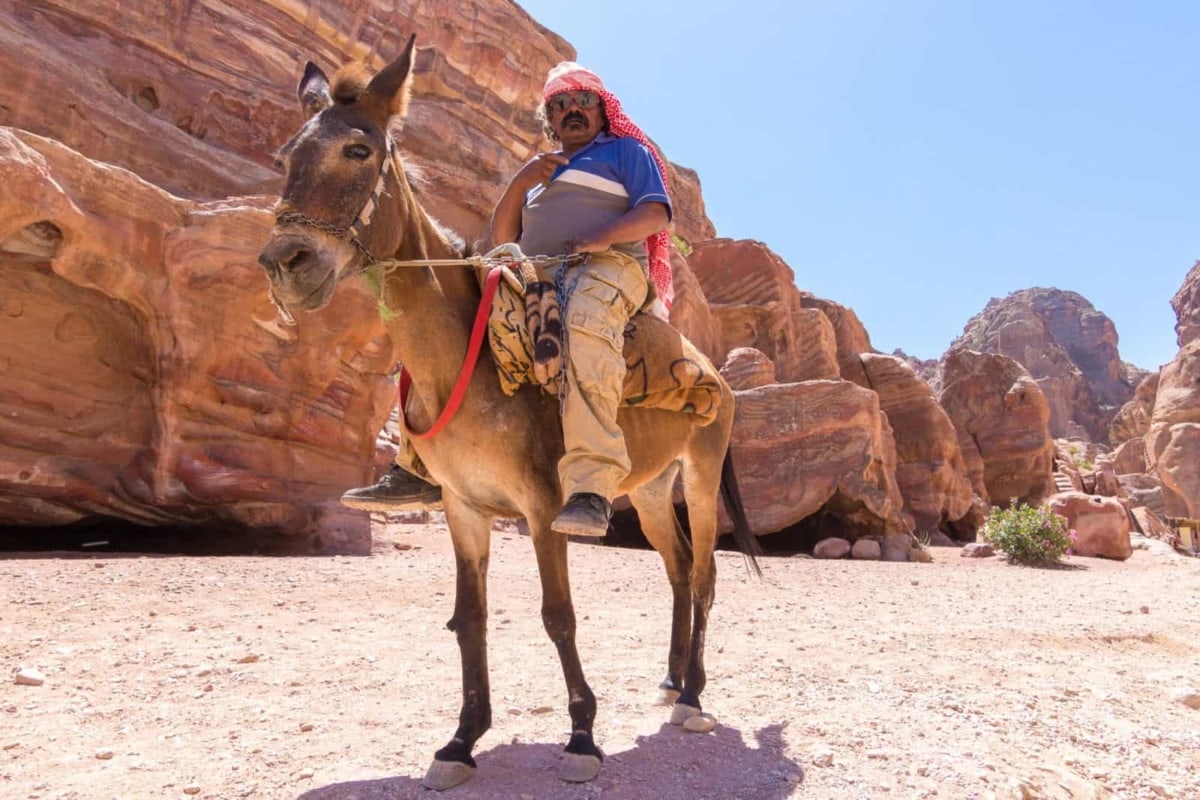
Just 30 minutes earlier I had been watching as Mohammed yelled at the German tourist. But when he offered to take me to the top, I didn’t speak a word of it. After all, this is their turf, and they can do as they please.
With long strides, Mohammad bounded towards the carved rock face of the Monastery and I followed behind him. When we arrived on the right side of it, where there was nothing but a vertical rock wall, he scaled right up it without even breaking stride.
With Spiderman-like glue on his feet, he stuck to the rock and leaned back down to extend his arm. I didn’t realize we’d be free-climbing 158 feet up a vertical cliff. I stopped for a second, questioning whether or not this was really such a good idea, and decided that if he could do it, I could, too.
I pretended not to see his outstretched arm and I pulled myself up behind him. Gasps echoed throughout the crowd that had been watching on from the cafe.
I got this.
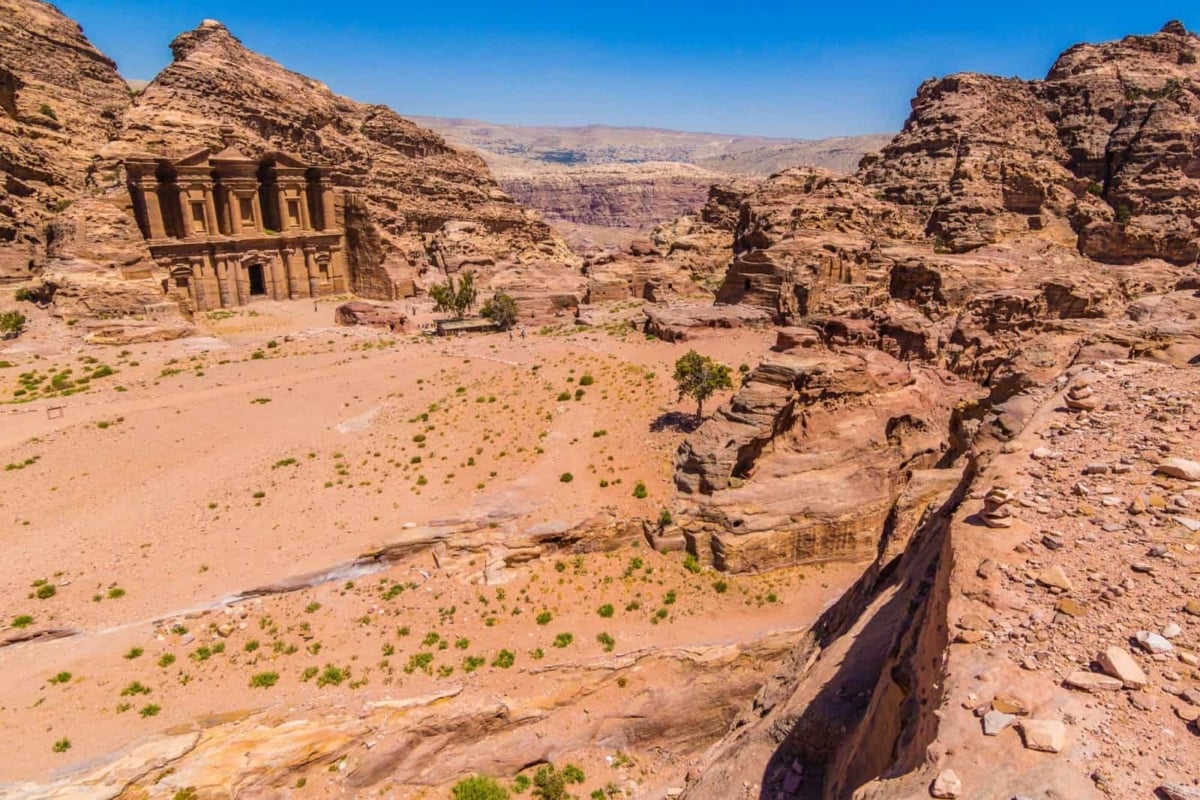
Remembering an article written by author and friend, Bruce, entitled “Rent a Real Man in Borneo,” I watched in amazement as Mohammad expertly scaled up the wall. He was one of the real men that Northam talks about—the type of man who lives in the desert, navigates the elements, and knows how to climb walls.
I fumbled my way up, not nearly as quickly as him, but with a little bit of experience under my belt I had a decent enough idea of what I was doing. After all, I’ve been rock climbing in New Zealand, free soloing in Thailand, and canyoning in Colombia.
About two-thirds of my way up the rock face I reached a complicated set of holds. I stalled, not knowing what I was supposed to do next. Here I was, 100 feet in the air, without a visible way up and just one likely way down.
Shit.
The thought of falling from a cliff, somewhere deep in the heart of the Middle East, thundered through my brain. My heart raced, and I drew an extended, dusty breath of air into my lungs. Without realizing what was happening, Mohammad’s arms came down from above, grabbed the shoulder straps of my backpack, and pulled me up to his level.
I looked above me and, already, he was gone. He had scrambled the rest of the way to the top and disappeared over the cliff’s edge.
He was like a spider-monkey, this one.
I, too, scrabbled the rest of the way to the top, one foothold after the other, and as I pulled myself up over the ledge, the crowd below broke out in wild cheers. My legs trembled with nervousness and excitement as I stood up straight and turned around to look down over the ledge behind me. My heart thudded inside my chest, sweat burned into my eyes, and I beamed.
“Over here!” Mohammad called. “You stand there. Take photo. I jump!”
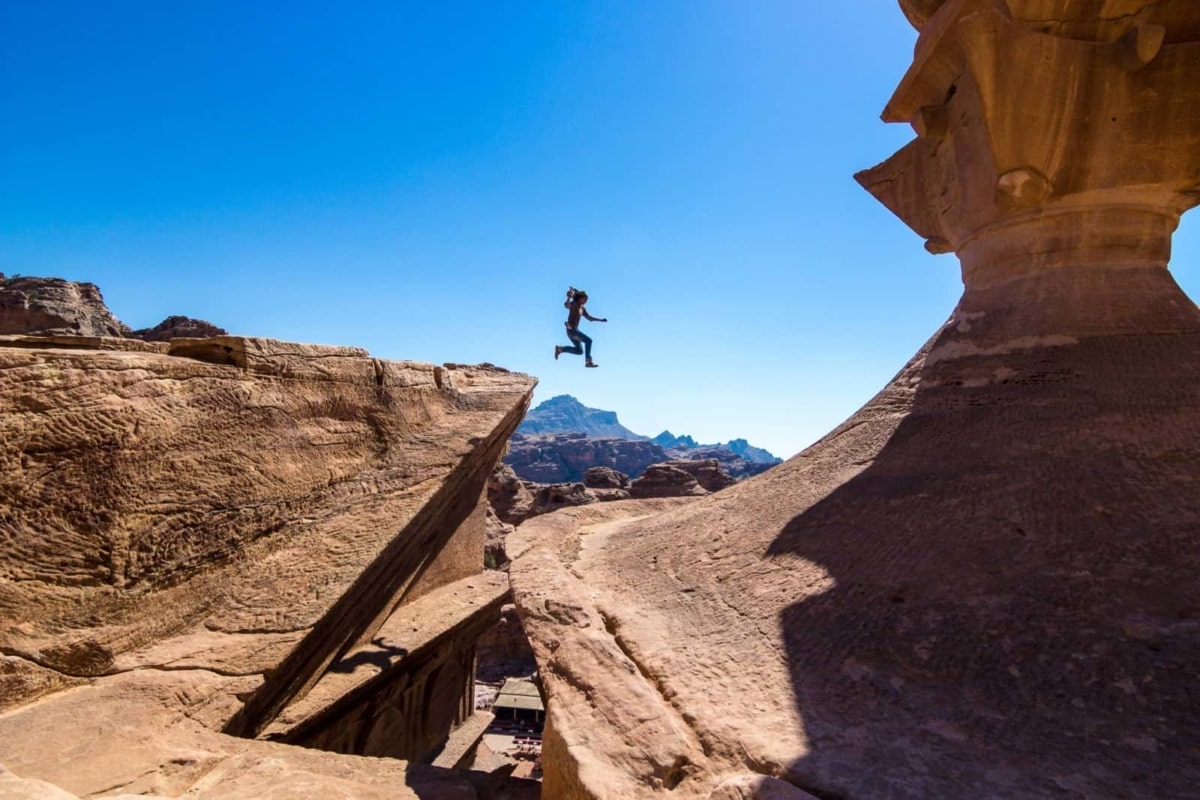
I watched on in amazement as he set himself up with a 20 foot running start and jumped 15 feet to the ledge below him. One slight misstep in his landing and he would find himself tumbling over the edge, falling 158 feet to his death.
But no matter. He got this.
Mohammad stood on the sidelines, watching me act like an ecstatic child, running around the circular lid of the central urn which crowns the Monastery. He took a seat on the ledge and asked me to join. My stomach muscles tightened, and I lowered myself down next to him, waving my feet at the tourists below.
We sat for a few moments, and he told me stories of his brothers and where he was from. He told me secrets of Petra and the Monastery. He told me about the time he spent the night up here with a girl.
And then he told me that he’d see me down at the bottom. And like that, he was gone.
A few more photo ops and I decided not to be the second tourist to get taken away by a mustachioed man that day. I took to the closed-off stairs next to the monument (the one decorated with the big ‘NO CLIMBING’ sign) and I descended.
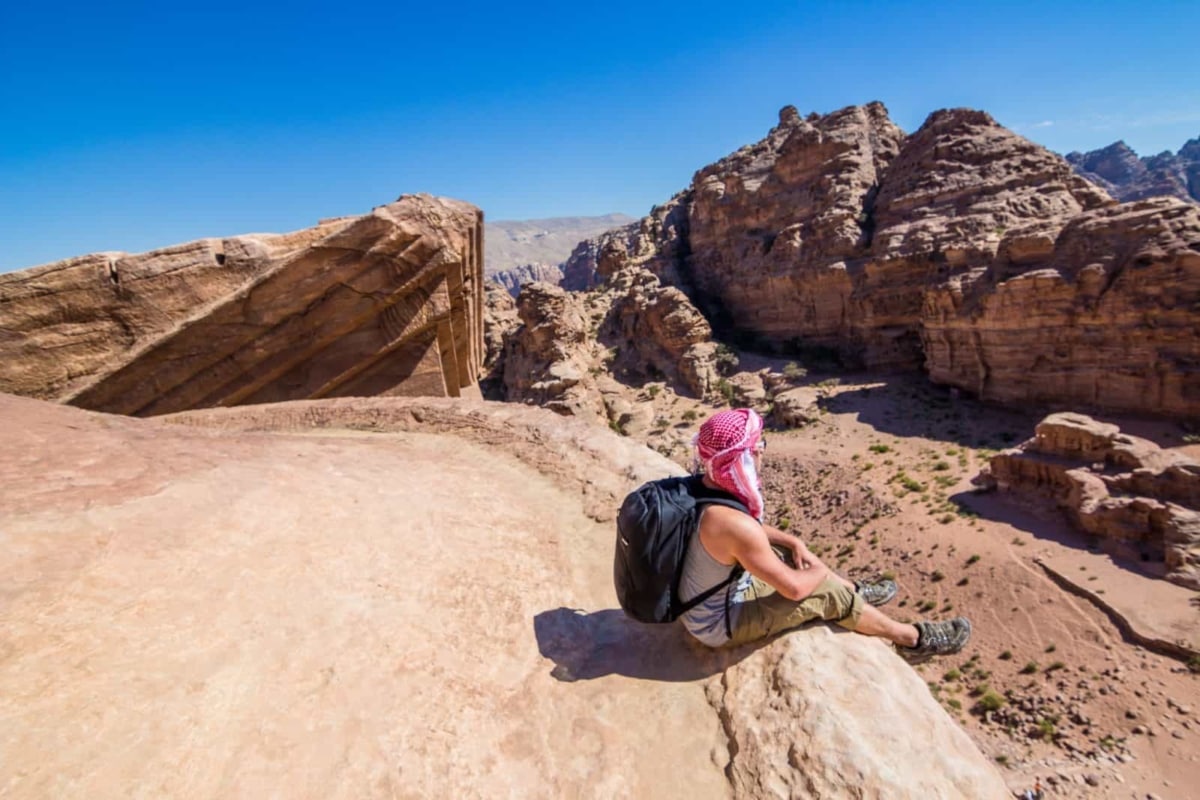
Whose Land is it Anyway?
My actions that day are controversial. Climbing the Monastery is forbidden, and many might argue that I shouldn’t have done it.
Those people might be right, and as someone who cares greatly about responsible tourism, I could be inclined to agree with them. But I offer two alternative arguments.
400,000 people visited the city of Petra last year (which is actually 50% less than in 2010, due to conflicts in neighboring Iraq and Syria). If all 400,000 climbed to the top of the Monastery, preservation efforts would be fruitless and Petra would fall into physical decline. A few climbers here and there, however, make much less of a difference, especially considering this monument was built to be climbed.
But erosion is a real thing, and tourists do have a way of ruining things.
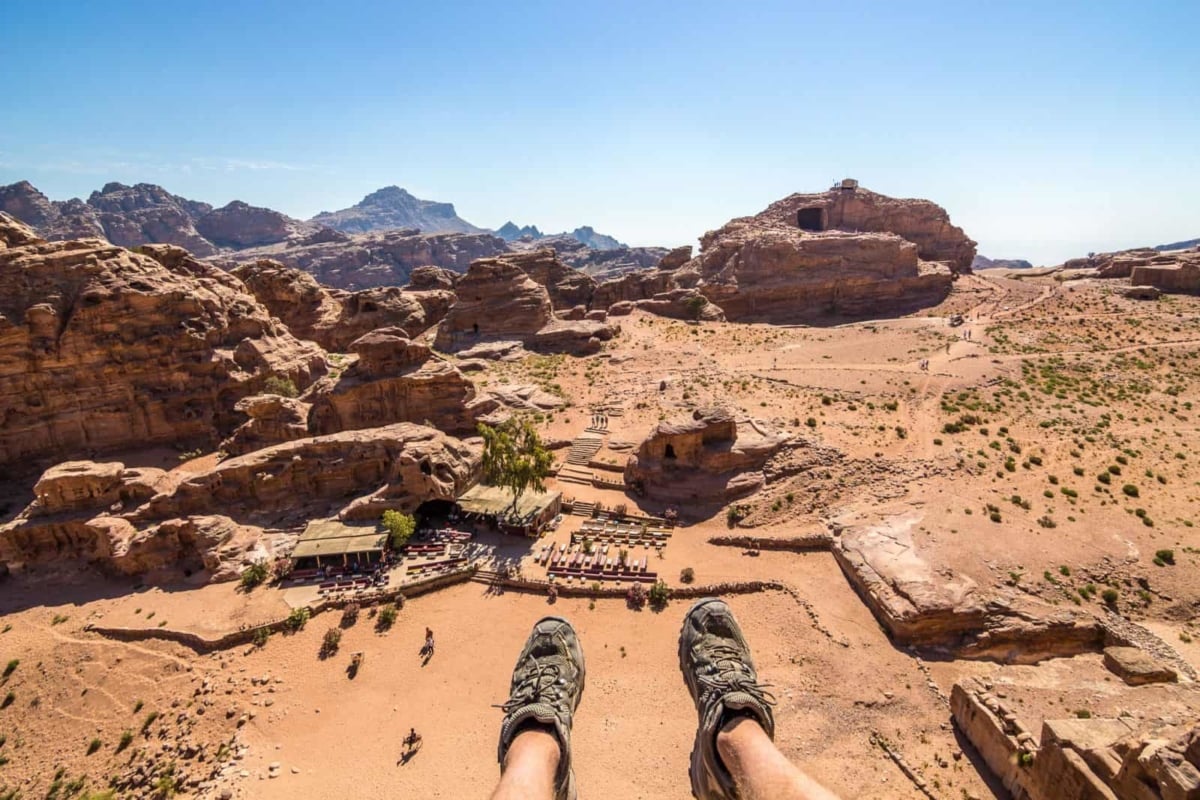
On the other hand, my actions were endorsed by the locals who have inhabited the land for centuries. I did not take it upon myself to climb alone—I was brought by a local, one who has climbed this monument hundreds of times and one who rightfully claims this land as his own.
I made friends with the Bedouins that day, and in return they decided to share with me something they treasure—a hidden gem of Petra—a view not often experienced by outside visitors. It’s an experience they keep close to their heart, only sharing it with some of those who choose to honor their culture and their land.
Was I disrespectful? To UNESCO, perhaps. But this territory belongs to the Bedouins, and it’s our responsibility to play by the rules of the locals when we are a visitor in a new land.
If you do this, and you make a genuine effort to get to know and honor the locals, they might honor you back. And though they might not take you to the top of the Monastery, maybe they’ll share with you another little hidden piece of their world.
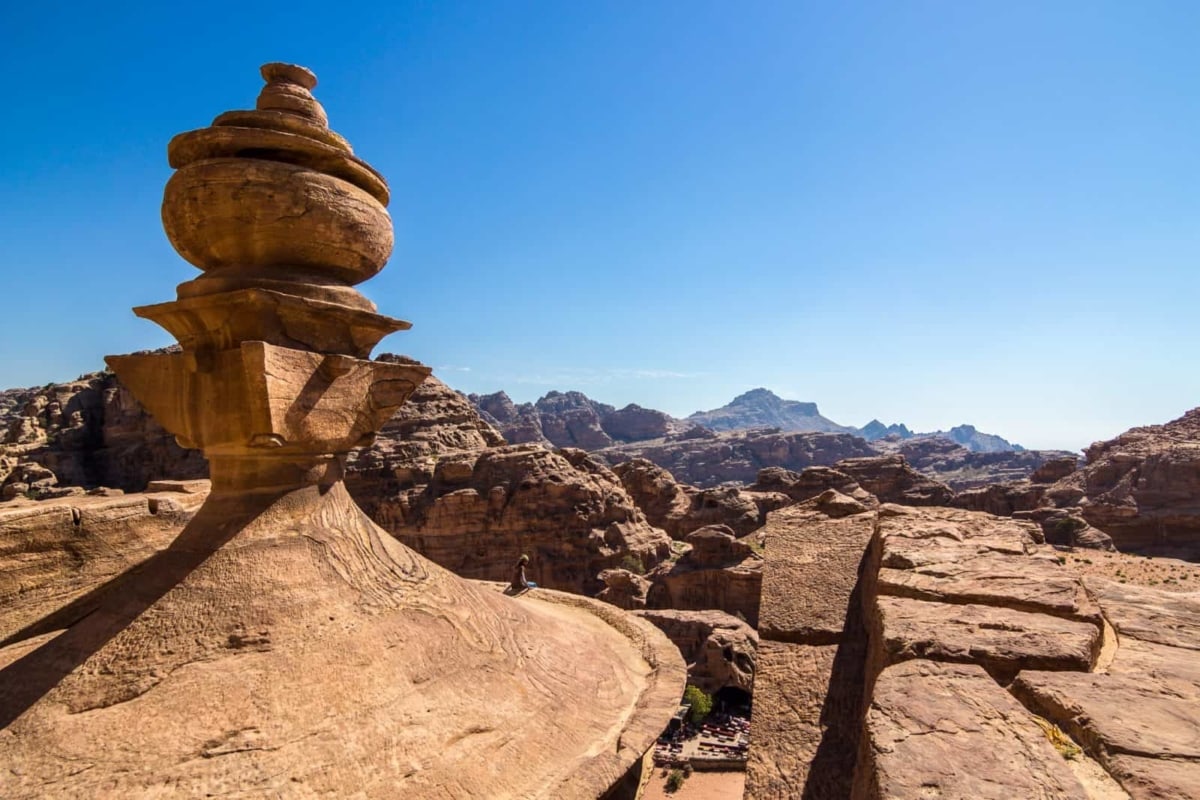
READ NEXT: Is it Safe to Travel to Egypt?
Disclaimer: This trip to Petra was made possible by Tourist Israel and Abraham Tours who provided me with this Petra tour in exchange for other journalistic services. Collaborations like this allow me to continue bringing you the best content I can, and they never sacrifice the integrity of my words. Neither Tourist Israel nor Abraham Tours took part in, or condoned my climbing of the monument. This was done in my spare time and without the knowledge or consent of the tour guides or organizers.

Definitely pretty ballsy, but there IS a huge difference between you and that German tourist – you were invited to climb; he wasn’t and was just clearly disregarding the rules. Great story!
Thanks, Amanda! I think that’s what set the two of us apart. I think people should follow the rules of the places they visit, but there are always special circumstances.
Those photos look breathtaking! I can’t imagine what it must’ve felt like to be there in person. What a lucky, unique experience!
It was gorgeous! I hope you can visit Petra someday!
I have wanted to go to Petra for a very long time now. I’ll get there eventually.
Whether or not I agree with you going up there when you shouldn’t doesn’t matter. I guess rules are meant to be broken sometimes. But the picture with the man jumping? Best photo I’ve seen in WEEKS! It’s amazing!
Glad you liked the photos, Zascha! I understand it’s complicated territory, but these were special circumstances and I wanted to share my experience.
Amazing experience! And the photos – absolutely breathtaking! Especially the jump one – OMG! I really like your way of writing – the most important is to get a personal touch across – I will visit your blog more since I subscribe to it – it is amazing and I am hoping to learn more from you 🙂
Thanks for stopping by, Monika!
Came across your article in #petra – really enjoyed it. Love the photos, the stories, the humour and the factual information, as well. A good read for anyone coming to Petra.
You got me there, Jeremy, I really thought it was you being escorted off at the beginning! You certainly won the approval of the locals, and the jump shot is incredible. Petra is one of the places that I urgently want to visit
Awesome shots Jeremy! If the locals approved it, you got approval. UNESCO has their take, some tourists have their take, you received a go ahead from a local version. If the local said NO, it’d be a different story. Cool post!
Ryan
Thanks, Ryan! I agree with you 🙂
That was so cool! and I’d say so very lucky of you to be given that kind of gift by a local, and that jump shot is such a killer! wow! 🙂
“Mohammad stood on the sidelines, watching me act like an ecstatic child…”
I love that first and foremost, Jeremy. Your writing style really puts me in the action and is a big part of why we travel. Let us act like kids sometimes. It’s okay! On another note, I’m with the locals on letting you walk about on their land. Why should they have to follow UNESCO when it’s theirs? Maybe they need to have a chat with the bedouins and work out some rules?
Thanks for sharing this look at Petra, and that jump photo. Whoa, seriously awesome!
Take care Jeremy.
When you started describing the process of climbing, my one and only reaction was “NOPE.” My fear of heights really isn’t that dramatic, but even so, I’m not sure I’d be able to handle free climbing up there! Seems like a cool adventure though, and even though the ethics of it could be considered controversial, it seems like you were on the right side of it, unlike that German guy.
I’m not going to lie–it was tons of fun. A real adrenaline rush!
Amazing photos Jeremy! I’ve been dreaming about going there since I’ve read about Petra in my 8th grade. I hope all those tourists don’t cause same kind of damage to the stones.
What was the name of the monastery above Petra where you had to climb over 800 steps to get up there?
Thanks for sharing all this story about your journey to Jordan’s ancient city of Petra. Well, I saw the pics you climbed from 800 steps to get to the top. I m stunned. How did you do? I can’t believe on this.
Thank you for sharing your marvelous and adventures journey to Petra Jordan. Your petra jump shot pic is awesome mate.
Really loved reading your account of your visit to Petra, you brought the scene together very well. I was in Petra a few months ago and it was one of the highlights of all of my visits this year. I had no idea you could even climb to the top of the monastery and sit on the edge like that and your pics from it are incredible – saw the café you were in and was there myself looking up at this amazing structure, it brought it all back. Great post
!
So glad you enjoyed it! I definitely don’t recommend climbing the Monastery as it’s forbidden. But it was a once in a lifetime experience that I enjoyed sharing. Happy to hear it brought back fond memories of your visit to Petra, as well 🙂